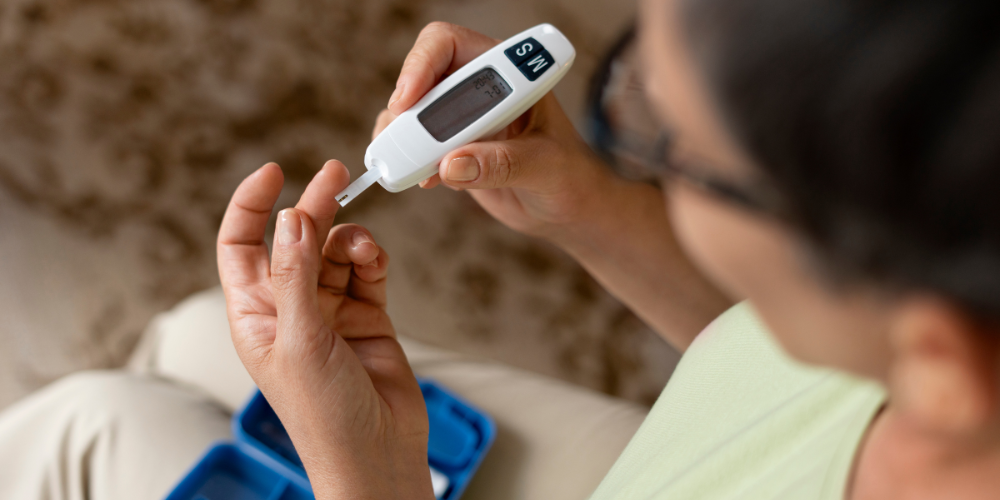
What Affects Diabetes Risk More: Lifestyle or Body Weight?

Type 2 diabetes doesn’t just happen overnight. It develops quietly, often for years, and its risk factors are both visible and hidden. A recent long-term study involving over 165,000 individuals across multiple ethnic groups in the U.S. reveals something that challenges what many might assume—while adopting healthy lifestyle habits helps, it’s body weight that holds the strongest link to developing diabetes.
Understanding What Influences Diabetes Risk
The research, published in the European Journal of Nutrition, explored how lifestyle behaviors combine to affect type 2 diabetes (T2DM) risk in a diverse population. The study introduced a Lifestyle Risk Factor Index (LSRI), awarding a score from 0 to 4 based on these habits:
– Not currently smoking
– Engaging in at least 150 minutes of moderate to vigorous physical activity each week
– Drinking no more than 1 drink per day for women and 2 for men
– Following at least 3 out of 7 specific dietary recommendations

Freepik | katemangostar | Specific lifestyle habits, like avoiding smoking and exercising, impact Type 2 Diabetes risk.
These dietary guidelines included regular intake of fruits, vegetables, whole grains, and fish—while limiting processed meats, red meat, and refined grains.
What the Numbers Say
Participants were followed for an average of 17 years. During that time, nearly 27% developed type 2 diabetes. Most participants scored 2 or 3 out of 4 on the LSRI, and only a small fraction met dietary guidelines. Interestingly, adherence to healthy habits like physical activity (81%) and not smoking (84%) was more common than dietary compliance.
Still, not all lifestyle choices had equal impact. While better LSRI scores were linked with lower diabetes risk overall, the effect weakened when body mass index (BMI) was considered. In other words, someone living a moderately healthy lifestyle but maintaining a higher BMI faced more risk than someone with a similar lifestyle at a healthier weight.
The Influence of Weight Across Ethnicities
Body weight’s role in diabetes risk was especially notable in certain ethnic groups. For example:
– Japanese Americans and Native Hawaiians had the highest risk increases with higher BMI, likely due to differences in fat distribution, particularly around internal organs.
– African Americans, Latinos, and European Americans showed reduced risk with higher LSRI scores—but even in these groups, obesity tripled the chances of developing diabetes.
This means that even if someone avoids smoking, drinks moderately, eats decently, and exercises regularly, their weight can still be a stronger indicator of future diabetes risk—especially depending on their ethnic background.
Why Lifestyle Still Matters
While BMI came out as the stronger predictor, lifestyle habits aren’t irrelevant. The combination of not smoking and regular physical activity was especially powerful, lowering the risk significantly—even after adjusting for weight. These two factors remained consistent predictors of lower diabetes incidence across all ethnicities studied.
On the flip side, dietary habits showed only a weak protective effect when weight was taken into account. For instance, although fish intake was relatively high (73%), fewer than 10% met recommendations for refined grains or red meat consumption. It’s clear that while diet plays a role, consistent activity and weight control are more influential.
Cultural Considerations for Prevention
What works for one group may not work for all. The study highlights the need for tailored approaches to diabetes prevention:
– Among Latinos and African Americans, physical activity levels were lower, suggesting a need for better access to safe and affordable exercise options.
– Japanese Americans and Native Hawaiians experienced greater effects of obesity on diabetes risk, emphasizing the need for culturally relevant weight management strategies.
Public health efforts will be more effective if they consider not just behaviors but how those behaviors intersect with cultural, genetic, and social realities.
How to Lower Diabetes Risk Effectively

Freepik | To lower diabetes risk, prioritize being active and not smoking.
Here’s what stands out from the data:
1. Prioritize healthy weight management—this is the most consistent and powerful way to reduce type 2 diabetes risk.
2. Stay active and avoid smoking—these two habits had the clearest and strongest individual effects.
3. Don’t ignore diet but focus on achievable improvements—even small dietary changes can contribute to overall wellness, especially when combined with physical activity.
Balancing Habits and Health
Type 2 diabetes risk is shaped by many factors, but this extensive study reinforces one truth: body weight has the strongest influence, even when compared to other healthy behaviors. That doesn’t mean lifestyle habits aren’t important—they absolutely are.
However, maintaining a healthy weight appears to be the most effective way to reduce risk, especially for certain ethnic groups more sensitive to weight-related metabolic issues.
The takeaway isn’t to ignore lifestyle habits but rather to recognize that all efforts—diet, exercise, smoking cessation, and weight control—work best when combined. For real impact, prevention strategies must address both the scale and the daily routine.
More in Lifestyle
-
GOLDEN AGE STARS WHO ARE STILL ALIVE AND DOING GREAT AT RETIREMENT!
Joely Fisher (57) -Burbank It’s fair to say that actress Joely Fisher was born with a great showbiz background since she’s...
May 26, 2025 -
GOLDEN AGE STARS WHO ARE STILL ALIVE AND DOING GREAT AT RETIREMENT!
Richard Dean Anderson – Age 74 Like other veteran actors who stay in the headlines for their excellent work, Richard is...
May 21, 2025 -
`
Try This 30-Day Rule to Start Living a More Minimalist Life
Simplifying life doesn’t mean sacrificing comfort. It’s about clearing the clutter—physical and mental—to create room for what truly matters. The 30-day...
May 3, 2025 -
`
The Surprising Health Benefits of Walking Backwards
Walking is one of the easiest ways to stay active, but it turns out there’s a lot more to it than...
April 25, 2025 -
`
Grocery Prices May Climb as New Tariffs Hit Imported Food
Rising food prices are nothing new, but recent tariff plans could make everyday grocery staples even more expensive. A new round...
April 18, 2025 -
`
Foods and Drinks to Avoid at the Airport, According to Experts
Airports are a hub of activity, offering a wide range of food and drink options as travelers rush to board their...
April 12, 2025 -
WEIBLICHE STARS, DIE MAKELLOS GEALTERT SIND UND WUNDERSCHÖN AUSSEHEN!
Nicole Seibert – Alter 55 Die damals erst 17-jährige Nicole siegte 1982 mit dem Lied Ein bisschen Frieden beim Eurovision Song...
March 20, 2025 -
WEIBLICHE STARS, DIE MAKELLOS GEALTERT SIND UND WUNDERSCHÖN AUSSEHEN!
Nicole Seibert – Alter 55 Die damals erst 17-jährige Nicole siegte 1982 mit dem Lied Ein bisschen Frieden beim Eurovision Song...
March 20, 2025 -
Il est difficile de croire que ces célébrités féminines du passé sont toujours aussi impeccables
Claudia Schiffer, 50 ans Parmi nos beautés éternelles, Claudia Schiffer est le symbole du charme et de l’élégance des années 1990....
March 20, 2025










You must be logged in to post a comment Login